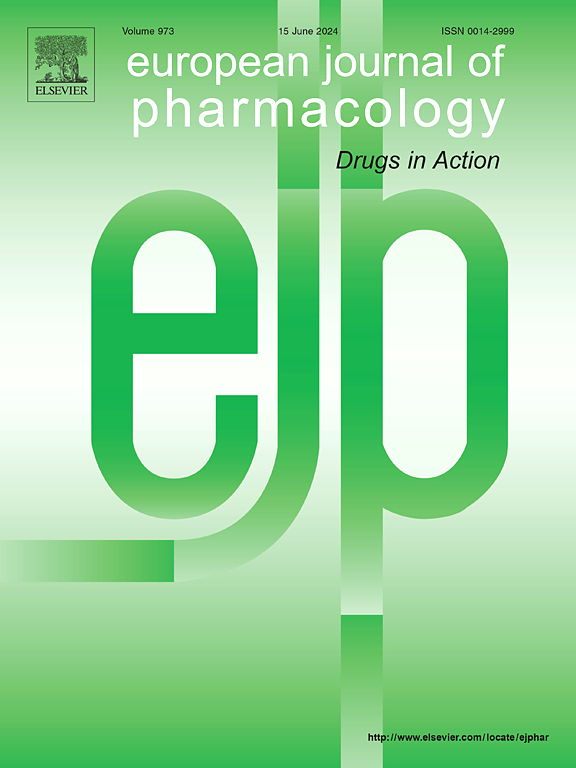Therapeutic potential of flavonoids against α-synuclein aggregation in Parkinson's Disease: Integrative in silico and in vitro analysis
IF 4.7
3区 医学
Q1 PHARMACOLOGY & PHARMACY
引用次数: 0
Abstract
Amyloidogenic protein aggregation is the key factor in neurodegenerative diseases. Due to the cost-effectiveness and low side effects, attention to herbal medicines has been recently increased. Flavonoids are a group of plant compounds with high potential for reducing the accumulation of amyloidogenic proteins. This research aims to identify the most effective flavonoids for inhibiting the fibrillation of α-synuclein (α-syn). For this purpose, 98 flavonoids from different databases were selected for analysis. The pharmacokinetic properties of these flavonoids were evaluated using OSIRIS and Swiss-ADME web tools. The interaction of α-syn and flavonoids was investigated in the positions predicted via DoGSiteScorer and CASTp web servers. Subsequently, luteolin and baicalein, the flavonoids with the most negative binding energy and interaction with the amino acids of α-syn amyloidogenic regions, were selected for further in vitro studies. In this phase, α-syn was incubated under fibrillation conditions in the presence and absence of flavonoid treatment. Results from the thioflavin T (ThT) fluorescence assay, atomic force microscopy (AFM), and proteinase K (PK) enzymatic digestion assay showed that baicalein and luteolin significantly inhibited α-syn fibril formation. Fourier transform infrared spectroscopy (FTIR) demonstrated a decrease in β-sheet content and confirmed the inhibitory effect of baicalein and luteolin. In addition, cell culture analysis also showed that luteolin could increase the viability of SH-SY5Y cells exposed to α-syn fibrils by destabilizing toxic fibrils and converting them into non-toxic amorphous aggregates. These findings can be useful to develop flavonoid-based therapeutic strategies for synucleinopathies, such as Parkinson's disease (PD).

黄酮类化合物对帕金森病α-突触核蛋白聚集的治疗潜力:综合计算机和体外分析。
淀粉样蛋白聚集是神经退行性疾病的关键因素。由于成本效益和低副作用,对草药的关注最近有所增加。黄酮类化合物是一类具有减少淀粉样蛋白积累潜力的植物化合物。本研究旨在寻找抑制α-突触核蛋白(α-syn)纤颤最有效的类黄酮。为此,从不同的数据库中选择了98种黄酮类化合物进行分析。使用OSIRIS和Swiss-ADME网络工具评价这些类黄酮的药动学性质。通过DoGSiteScorer和CASTp网站服务器对α-syn与黄酮类化合物的相互作用进行了研究。随后,选择与α-syn淀粉样蛋白区氨基酸相互作用负结合能最大的黄酮类化合物木犀草素和黄芩素进行进一步的体外研究。在这一阶段,α-syn在存在和不存在类黄酮处理的纤颤条件下孵育。硫黄素T (ThT)荧光、原子力显微镜(AFM)和蛋白酶K (PK)酶切实验结果表明,黄芩素和木犀草素显著抑制α-syn纤维的形成。傅里叶变换红外光谱(FTIR)显示β-sheet含量降低,证实了黄芩素和木犀草素的抑制作用。此外,细胞培养分析还表明,木犀草素可以通过破坏α-syn原纤维的稳定性,将有毒原纤维转化为无毒的无定形聚集体,从而提高α-syn原纤维暴露的SH-SY5Y细胞的活力。这些发现可能有助于开发基于类黄酮的突触核蛋白病治疗策略,如帕金森病(PD)。
本文章由计算机程序翻译,如有差异,请以英文原文为准。
求助全文
约1分钟内获得全文
求助全文
来源期刊
CiteScore
9.00
自引率
0.00%
发文量
572
审稿时长
34 days
期刊介绍:
The European Journal of Pharmacology publishes research papers covering all aspects of experimental pharmacology with focus on the mechanism of action of structurally identified compounds affecting biological systems.
The scope includes:
Behavioural pharmacology
Neuropharmacology and analgesia
Cardiovascular pharmacology
Pulmonary, gastrointestinal and urogenital pharmacology
Endocrine pharmacology
Immunopharmacology and inflammation
Molecular and cellular pharmacology
Regenerative pharmacology
Biologicals and biotherapeutics
Translational pharmacology
Nutriceutical pharmacology.

 求助内容:
求助内容: 应助结果提醒方式:
应助结果提醒方式:


